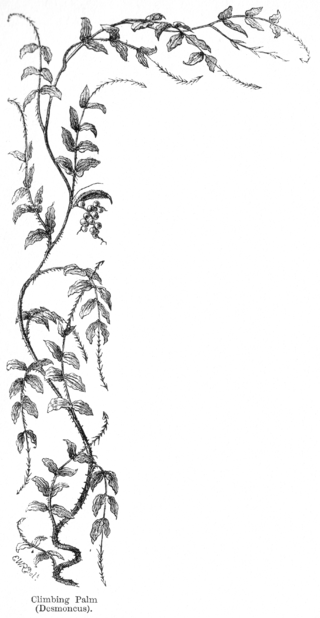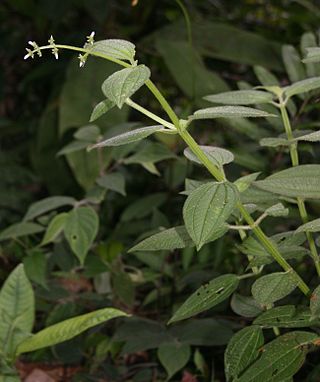
Martin H[e]inrich Carl Lichtenstein was a German physician, explorer, botanist and zoologist. He explored parts of southern Africa and collected natural history specimens extensively and many new species were described from his collections by European scientists.

Johann Baptist Ritter von Spix was a German biologist. From his expedition to Brazil, he brought to Germany a large variety of specimens of plants, insects, mammals, birds, amphibians and fish. They constitute an important basis for today's National Zoological Collection in Munich. Numerous examples of his ethnographic collections, such as dance masks and the like, are now part of the collection of the Museum of Ethnography in Munich.

Carl Friedrich Philipp von Martius was a German botanist and explorer. Between 1817 and 1820, he travelled 10,000 km through Brazil while collecting botanical specimens. His most important work was a comprehensive flora of Brazil, Flora Brasiliensis, which he initiated in 1840 and was completed posthumously in 1906.

Trachycarpus fortunei, also known as the Chusan palm, Chinese windmill palm, or simply the Windmill palm, is a species of hardy evergreen palm tree in the family Arecaceae, native to parts of China, Japan, Myanmar, and India.

Acacia, commonly known as wattles or acacias, is a genus of about 1,084 species of shrubs and trees in the subfamily Mimosoideae of the pea family Fabaceae. Initially, it comprised a group of plant species native to Africa, South America, and Australasia, but is now reserved for species mainly from Australia, with others from New Guinea, Southeast Asia, and the Indian Ocean. The genus name is Neo-Latin, borrowed from the Greek ἀκακία, a term used in antiquity to describe a preparation extracted from Vachellia nilotica, the original type species.

Robert Wight was a Scottish surgeon in the East India Company, whose professional career was spent entirely in southern India, where his greatest achievements were in botany – as an economic botanist and leading taxonomist in south India. He contributed to the introduction of American cotton. As a taxonomist he described 110 new genera and 1267 new species of flowering plants. He employed Indian botanical artists to illustrate many plants collected by himself and Indian collectors he trained. Some of these illustrations were published by William Hooker in Britain, but from 1838 he published a series of illustrated works in Madras including the uncoloured, six-volume Icones Plantarum Indiae Orientalis (1838–53) and two hand-coloured, two-volume works, the Illustrations of Indian Botany (1838–50) and Spicilegium Neilgherrense (1845–51). By the time he retired from India in 1853 he had published 2464 illustrations of Indian plants. The standard author abbreviation Wight is used to indicate this person as the author when citing a botanical name.

Desmoncus is a genus of mostly climbing, spiny palms native to the Neotropics. The genus extends from Mexico in the north to Brazil and Bolivia in the south, with two species present in the southeastern Caribbean.

Historia naturalis palmarum: opus tripartitum is a highly illustrated, three-volume botanical book of palms (Arecaceae) by German botanist Carl Friedrich Philipp von Martius. The work is in Latin and was published in imperial folio format in Leipzig (Lipsiae) by T.O. Weigel, volume one in 1823 and the final volume in 1850. It includes more than 550 pages of text and 240 chromolithographs, including views of habitats and botanical dissections.

Aciotis is a genus of flowering plants in the family Melastomataceae. The genus was first described in 1823 by David Don.

Euphronia is a genus of three species of shrubs native to northern South America and is the only genus in the family Euphroniaceae. It was previously classified in the Vochysiaceae family and elsewhere due to its unique floral features, but the APG III system of 2009 recognized Euphroniaceae as distinct and placed Euphronia in it. Based on molecular data from the rbcL gene, it is sister to the Chrysobalanaceae.

Durringtonia is a monotypic genus of flowering plants in the family Rubiaceae. The genus contains only one species, viz. Durringtonia paludosa, which is endemic to Australia.

Annona tenuiflora is a species of plant in the family Annonaceae. It is native to Brazil, Colombia, French Guiana and Venezuela. Carl Friedrich Philipp von Martius, the German botanist who first formally described the species, named it after the slender sepals and petals of its flowers.
Bocagea longepedunculata is a species of plant in the family Annonaceae. It is native to Brazil. Carl Friedrich Philipp von Martius, the German botanist and explorer who first formally described the species, named it after its long floral stalks.

Tupeia is a monotypic genus of semi-parasitic shrubs (mistletoes) which occurs in both the North and South Islands of New Zealand. There is only one species in the genus: Tupeia antarctica. There are no synonyms.

Trianthema triquetrum is a plant in the Aizoaceae family, found in the Sahara, the Sahel, South Africa, the Indian subcontinent, Thailand, Indonesia and all the mainland states and territories of Australia, except Victoria.

Thyridolepis mitchelliana is a plant in the grass family, found in all mainland states and territories of Australia, except Victoria.

Benjaminia is a monotypic genus of flowering plants belonging to the family Plantaginaceae. It only contains one known species, Benjaminia reflexa(Benth.) D'Arcy.
Inga cordistipula is a species of tree in the family Fabaceae. It was described by German botanist Carl Friedrich Philipp von Martius. It can be found in Colombia and Brazil.

Cecropia sciadophylla is a plant species from the genus Cecropia. The species was originally described by Carl Friedrich Philipp von Martius in 1841.

Abutilon lepidum is a flowering plant in the family Malvaceae. It was first described in 1868 as Sida lepida by Ferdinand von Mueller, but was transferred to the genus, Abutilon, in 1980 by Andrew Stewart Mitchell. The species epithet, lepidum, comes from the Latin adjective, lepidus, which means pleasant, charming, or elegant.


















